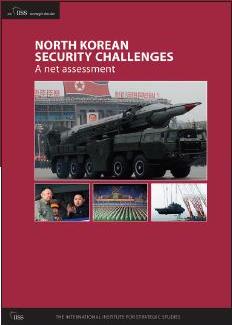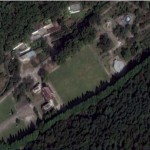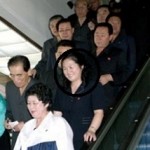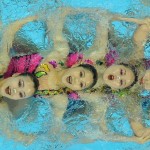Institute for Far Eastern Sudies (IFES)
2011-7-19
Kim Jong Il has made a total of 63 official activities in the first half of 2011, focusing mainly on providing field guidance at economic related facilities. On contrast, only one onsite inspection was given at a military base.
According to an official report from the Ministry of Unification, Kim Jong Il was witnessed to have made 63 official appearances this year thus far, already reaching 80 percent of total activities made last year, a record all-time high in the number of official activities for Kim
Specifically, he has made 28 economic related activities which encompassed 45 percent of the entire official activities. Only 14 military related activities were made, the lowest number ever recorded. Out of the 14 military activities, 9 consisted of attendance at military performances and only one trip was entirely associated with military inspection. Alongside these inspections, Kim also made 7 foreign-related activities.
The monthly breakdown of Kim’s official activities was 15 in January, 11 in February, 9 in March, 13 in April, 10 in May and lastly, 5 in June.
Since 2009, Kim made consistent official appearances and the reports of his official activities were found regularly on a bi-weekly basis, except for June when his activities were not reported for two weeks between 14th to 30th.
Kim is accompanied by several officials on his official activities, in which 54 officials were recorded to have accompanied this year. Kim Kyong Hui escorted Kim the most at 48 times. Following Kim Kyong Hui; Jang Song Taek, vice chairman of National Defence Commission (NDC) accompanied 45 times; Kim Ki Nam, secretary of Workers’ Party of Korea (WPRK) accompanied 43 times; Tae Jong Su, secretary of WPK made 43 trips; Ju Kyu Chang, Director of WPK 38 times; Kim Jong Un, vice chairman of Central Military Committee of WPK 35 times; Park Do Chun, secretary of WPK 29 times; Choi Tae Bok, secretary of WPK, 27 times; Hyun Chul Hae, director of Korean People’s Army 26 times; Moon Kyong Duk, Pyongyang, secretary of Pyongyang City Party Committee 25 times; and lastly, Lee Myong Su, director of People’s Safety Ministry made 25 trips.
After making his appearance at the KWP Convention on September 28, 2011, Kim Jong Un has made a total of 73 official activities, and 35 of these activities took place this year.
In detail, Kim Jong Un made 20 military, 18 economic, and 7 foreign-related activities. Monthly breakdown of activities are 2 times in September, 16 times in October, 11 times in November, 9 times in December, 5 times in January, 9 times in February, 8 times in March, 7 times in April, 4 times in May and 2 times in June.
Kim Jong Un’s activities were chiefly military related in which 86 percent comprised of accompanying senior Kim on his visits to political and military sectors. This is a natural outcome, considering his official position as the vice-chairman of Central Military Committee of WPK. The high number of military activities is in sharp contrast with his father, who began to focus mainly on economic activities since 2008.
The New Year’s Message delivered at the beginning of this year placed “improvement of North Korean people’s lives and development of light industry” as the top agenda for the nation. Correspondingly, Kim Jong Il official activities were mainly economic-related to light industry and agricultural sectors.
Kim Jong Il’s official activities are noteworthy indicator which exhibit the direction of leadership and the changes occurring amongst the main elites





